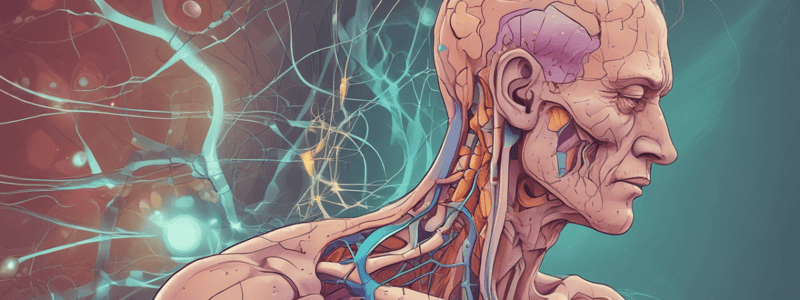Podcast
Questions and Answers
What is a consequence of using narcotic analgesics for chronic pelvic pain?
What is a consequence of using narcotic analgesics for chronic pelvic pain?
- Increased effectiveness in managing neuropathic pain
- Decreased dependence due to temporary pain relief
- completo resolution of pelvic muscle spasm
- Sensitisation of nerve pathways, worsening chronic pain (correct)
Why should narcotic analgesics be avoided in chronic pelvic pain management?
Why should narcotic analgesics be avoided in chronic pelvic pain management?
- They are only effective for short-term pain relief
- They are highly addictive and can worsen pain (correct)
- They have no role in managing chronic pelvic pain
- They are ineffective in treating pelvic muscle spasm
What is a strategy for managing pain while minimising the use of narcotic analgesics?
What is a strategy for managing pain while minimising the use of narcotic analgesics?
- Engaging in activities with strong personal motivating factors (correct)
- Relying solely on narcotic analgesics for pain relief
- Ignoring pain and focussing on other aspects of life
- Avoiding all physical activities to prevent further pain
What type of pain is narcotic analgesics often relatively ineffective in treating?
What type of pain is narcotic analgesics often relatively ineffective in treating?
What is a consequence of reducing the dose of narcotics after prolonged use?
What is a consequence of reducing the dose of narcotics after prolonged use?
What is a characteristic of central sensitisation?
What is a characteristic of central sensitisation?
What is an example of hyperalgesia?
What is an example of hyperalgesia?
What is a potential side effect of exercising too much with central sensitisation?
What is a potential side effect of exercising too much with central sensitisation?
What is the purpose of explaining the physical changes in nerve pathways to patients?
What is the purpose of explaining the physical changes in nerve pathways to patients?
What is a recommended starting dose of amitriptyline?
What is a recommended starting dose of amitriptyline?
Why should Pilates-style core-strength exercises be avoided?
Why should Pilates-style core-strength exercises be avoided?
What is a recommended type of exercise for pain management?
What is a recommended type of exercise for pain management?
Why is regular exercise considered essential for pain management?
Why is regular exercise considered essential for pain management?
Study Notes
Central Sensitisation
- Central sensitisation is a chronic pain condition that affects chronic back pain, postinjury pain, and pelvic pain.
- It is essential to manage this condition, especially when pain is present on most days.
Characteristics of Central Sensitisation
- Normal sensations felt as pain (allodynia)
- Painful sensations becoming more painful (hyperalgesia)
- Pain felt over a larger area when severe (wind-up pain)
- Poor sleep, fatigue, anxiety, and low mood
- Nausea, dizziness, or sweating
Treatment of Central Sensitisation
- Explanation of the physical change and sensitization of nerve pathways
- Use of neuropathic medications, such as:
- Low-dose amitriptyline (5-25 mg daily)
- Pregabalin (25-300 mg daily)
- Duloxetine (30-60 mg daily)
- Regular exercise, which is considered essential for pain management
- Activities with strong personal motivating factors, such as playing with children, sport, or craft
Exercise Considerations
- Start with a 10-minute walk daily and increase slowly
- Avoid too much exercise suddenly, which can result in more pain the next day
- Avoid Pilates-style core-strength exercises until pain improves
- Prefer exercises like walking, dancing, or gentle team sports
Avoiding Dependence
- Avoid narcotic analgesics due to high risk of dependence and potential to worsen chronic pain
- Narcotics are often relatively ineffective in neuropathic and pelvic muscle spasm pain
- Reducing the dose of narcotics later is difficult
Studying That Suits You
Use AI to generate personalized quizzes and flashcards to suit your learning preferences.
Description
Learn about central sensitisation, a chronic pain condition where normal sensations are felt as pain. Understand how to manage chronic back pain, postinjury pain, and pelvic pain. Discover the symptoms of allodynia, hyperalgesia, and wind-up pain.



